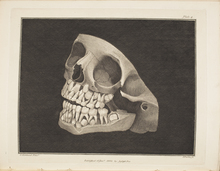Browse by category
- Subject
- Abstract
- Africa
- Amputation
- Anatomy
- Animal
- Animals
- Art nouveau
- Baby
- Beast
- Beasts
- Biology
- Birds
- Blood circulation
- Body
- Botany
- Breasts
- Cataract
- Chemistry
- Colourful
- Colours
- Corpse
- Dentistry
- Dermatology
- Disease
- Diseases
- Dissection
- Epilepsy
- Evolution
- Expressions
- Eye
- Eye diseases
- Eyes
- Faces
- Fashion
- Female breast
- Fishes
- Flowers
- Fly
- Frog
- Fruit
- Fundus
- Graphic
- Head
- Hearing organs
- Herbal
- Hermaphrodite
- Histology
- Human body
- Hysteria
- Impressionism
- Injured soldier
- Injuries
- Insane
- Insect
- Insects
- Lithotomy
- Lymphatic vessels
- Magic
- Marine organisms
- Medical examination
- Medical plants
- Medicine
- Microscopy
- Middle ages
- Midwifery
- Monster
- Muscle manikin
- Museum
- Mushrooms
- Nerve cells
- Neurology
- Nipples
- Nobel prize
- North america
- Nuts
- Obstetrics
- Odontology
- Ophtalmology
- Ophtalmoscope
- Optics
- Organic
- Orthopedics
- Pancreas
- Pathology
- Patient
- Pharmacy
- Physician
- Physiognomy
- Physiology
- Physionomy
- Plants
- Poisoness
- Polyp
- Pop-up pictures
- Portraits
- Prothesis
- Psychiatry
- Psychology
- Renaissance
- Skeleton
- Skin diseases
- Surgery
- Swedish flora
- Tattoo
- Teeth
- Teratology
- Trees
- Us civil war
- Vaccination
- Vocal organs
- War
- Zoology
- Emotion
- Absurd
- Amazing
- Amusing
- Artistic
- Beautiful
- Charming
- Colourful
- Dramatic
- Elegant
- Fanciful
- Fantasy
- Fascinating
- Funny
- Horrid
- Humorous
- Indecent
- Instructive
- Interesting
- Marvellous
- Masterpiece
- Morbid
- Old-fashioned
- Painful
- Remarkable
- Scary
- Spectacular
- Strange
- Superb
- Surrealistic
- Unattractive
- Unique
+ Show all

Odontological plate
-
The Natural History of the Human Teeth, including a Particular Elucidation of the Changes which take place during the Second Dentition, and describing the Proper Mode of Treatment to prevent Irregularities of the Teeth. To which is added, An Account of the Diseases which affect Children during the First Dentition. [Vol. II]: The History and Treatment of the Diseases of the Teeth, the Gums, and the Alveolar Processes, with the Operations which they respectively require. To which are added, Observations on other Diseases of the Mouth, and the Mode of Fixing Artificial Teeth.
London, Thomas Cox, 1803-1806. - Show book - Author: FOX, Joseph (1776–1816)
- First edition of Fox’s two classic treatises, which in a second edition of 1814 were published together in one volume under the title Natural History and Diseases of the Teeth. It was the first important work on dentistry in the nineteenth century and was for a long time considered the best practical book on the subject in the English language. The two volumes contain the substance of the lectures Fox held for the medical class at Guy’s Hospital in London in the late 1790’s, given to supplement those on medicine and surgery. This additional course for those students of medicine who wished to fit themselves especially for the practice of dentistry was the first of its kind and thus antedates the first independent dental college by over thirty years. Volume I is the first work on orthodontics, and Fox’s methods marked a great improvement over the methods of Fauchard and Bourdet, and became the most commonly used for nearly half a century. Volume I is the first to give specific operative procedures for correcting dental irregularities. Volume II, the first book to illustrate diseases of the teeth, is by some authorities held as more valuable than John Hunter’s A Pratical Treatise on the Diseases oif the Human Teeth (1778) and is also critisized by his former pupil in his introduction. The instructive and excellent plates are engraved by I. Parks after G. Kirtland, Franklin, and Parks in vol. I and Mogdridge in vol. II.






















